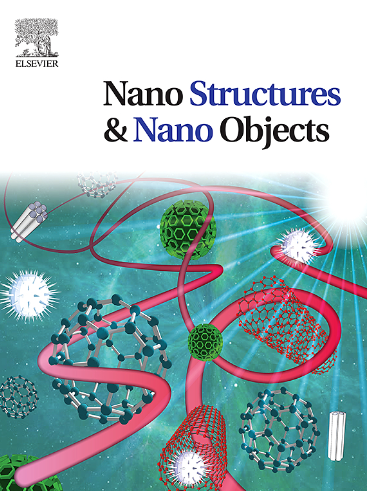纳米银SERS测定钡离子
IF 5.45
Q1 Physics and Astronomy
引用次数: 0
摘要
钡及其衍生物广泛应用于各种工业,并从水、生物和工业来源进入环境。人类钡中毒的急性、慢性和致命影响已经确定。因此,人们正在寻找更灵敏的检测钡离子的方法。本文报道了用SERS法测定钡离子。该方法需要特别功能化的等离子体纳米材料。本研究描述了一种化学还原合成球形银纳米粒子(55 ± 5 nm),其与4-巯基苯乙酸(MPAA)的功能化以及纳米粒子与钡离子的相互作用。实验揭示了Ba(II)结合导致纳米结构的形态变化。聚合的Ag-MPAA-Ba络合物的形成可以直观地显示出来,并通过UV-Vis、TEM、SERS数据得到证实。该配合物增强了MPAA的拉曼信号,允许检测10-15 M Ba(II),并为未来的分析应用开发了该方法的潜力。本文章由计算机程序翻译,如有差异,请以英文原文为准。
Determination of barium ions by SERS using silver nanoparticles
Barium and derivatives are widely used in various industries and enter the environment from water, biological, and industrial sources. Acute, chronic, and fatal effects of barium poisoning in humans have been identified. Therefore, more sensitive methods for detecting barium ions are being sought. The determination of barium ions by SERS is reported here. The method requires specifically functionalized plasmonic nanomaterials. The research describes a chemical reduction synthesis of spherical silver nanoparticles (55 ± 5 nm), their functionalization with 4-mercaptophenylacetic acid (MPAA), and the interaction of nanoparticles with barium ions. The experiments reveal morphological changes in nanostructures due to Ba(II) binding. The formation of the aggregated Ag-MPAA-Ba complex is shown visually and proven by UV-Vis, TEM, SERS data. The complex enhances the Raman signals of MPAA, allowing the detection of 10–15 M Ba(II) and develops the potential of the method for future analytical applications.
求助全文
通过发布文献求助,成功后即可免费获取论文全文。
去求助
来源期刊

Nano-Structures & Nano-Objects
Physics and Astronomy-Condensed Matter Physics
CiteScore
9.20
自引率
0.00%
发文量
60
审稿时长
22 days
期刊介绍:
Nano-Structures & Nano-Objects is a new journal devoted to all aspects of the synthesis and the properties of this new flourishing domain. The journal is devoted to novel architectures at the nano-level with an emphasis on new synthesis and characterization methods. The journal is focused on the objects rather than on their applications. However, the research for new applications of original nano-structures & nano-objects in various fields such as nano-electronics, energy conversion, catalysis, drug delivery and nano-medicine is also welcome. The scope of Nano-Structures & Nano-Objects involves: -Metal and alloy nanoparticles with complex nanostructures such as shape control, core-shell and dumbells -Oxide nanoparticles and nanostructures, with complex oxide/metal, oxide/surface and oxide /organic interfaces -Inorganic semi-conducting nanoparticles (quantum dots) with an emphasis on new phases, structures, shapes and complexity -Nanostructures involving molecular inorganic species such as nanoparticles of coordination compounds, molecular magnets, spin transition nanoparticles etc. or organic nano-objects, in particular for molecular electronics -Nanostructured materials such as nano-MOFs and nano-zeolites -Hetero-junctions between molecules and nano-objects, between different nano-objects & nanostructures or between nano-objects & nanostructures and surfaces -Methods of characterization specific of the nano size or adapted for the nano size such as X-ray and neutron scattering, light scattering, NMR, Raman, Plasmonics, near field microscopies, various TEM and SEM techniques, magnetic studies, etc .
 求助内容:
求助内容: 应助结果提醒方式:
应助结果提醒方式:


